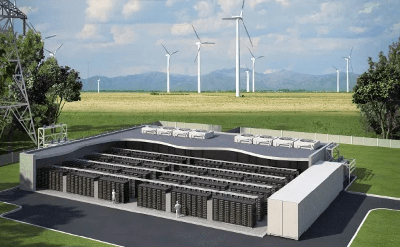Research believes that supporting the deployment of a 2-hour battery energy storage system will achieve higher economic returns
According to a survey report released by Lawrence Berkeley National Laboratory (LBNL) a few days ago, energy developers who hope to deploy renewable energy power generation facilities with battery energy storage systems may now have a variety of configurations to choose from.
Studies have shown that the use of a battery energy storage system with a short continuous discharge time (especially 2 hours) can provide the highest economic return.
The price of BESS still exceed benefits.
The report stated that the deployment of battery energy storage systems with renewable energy power generation projects is an increasingly popular option-36% of solar power generation projects connected to the grid in 2020 will be deployed with battery energy storage systems.
However, under recent market conditions, not all combinations of renewable energy power generation facilities and battery energy storage systems can be profitable.

Lithium-ion-battery storage system
The researchers simulated a large number of potential combinations available to energy developers today-combining different specifications of batteries, inverters, interconnection options, in addition to types of power generation.
Although its main purpose is to establish a flexible plan to quickly respond when market and policy problems arise, the researchers also provided the model with 2012-2019 market data from seven independent system operators in the United States to verify these configurations Which of them performs best in real-world scenarios.
According to the analysis of the laboratory, solar power generation facilities and wind power hybrid projects can obtain the greatest economic return when they are deployed with a lithium battery energy storage system BESS with a continuous discharge time of 2 hours. The increase in the installed capacity of the energy storage system and the scale of interconnection has the greatest impact on the potential benefits of the project, second only to the continuous discharge time of the battery energy storage system.
In general, the best-performing hybrid configurations in this model are those designed to take advantage of peak power demand periods to offset the relatively high cost of lithium-ion battery energy storage systems. For example, adjusting the scale of hybrid deployment energy projects to allow simultaneous discharge of battery energy storage systems and wind power generation facilities or solar power generation facilities proved to be a successful combination.
However, the cost of BESS is still high
However, the report said that in all seven independent systems operating high (ISO) service areas in the United States, the cost of deploying long-term battery energy storage systems is still high.
Gorman said: “The current market does not signal the need for long-term energy storage systems, but the penetration rate of renewable energy in the market is usually very low. We will not see the use of 100% renewable energy system in the next 5 to 10 years. ”
Montañés said in a webinar held a few days ago that the analysis usually reflects this trend in the energy industry when compared with data from hybrid power generation projects deployed across the United States. For example, the model shows that solar + energy storage projects have higher returns than wind + energy storage projects.
However, in some cases, the results are different from real-world applications. In the service area of the California independent system operator, its interconnection queue seems to limit the scale of hybrid energy projects, but this model shows that a larger interconnection scale will be more beneficial.
The report pointed out that US energy developers also showed a preference for the deployment of battery energy storage systems with a shorter continuous discharge time. Most of the deployed energy storage systems have a continuous discharge time of 1 to 4 hours.
Gorman pointed out that making long-term battery energy storage systems economically viable is facing some challenges, and this may be the reason why most long-term energy storage projects focus on seeking alternative lithium-ion battery energy storage systems.
But Montañés said that this does not mean that long-term battery energy storage systems will not occupy a place in the future grid.
She said, we believe that different energy technologies are complementary and allow different continuous discharge times or types of power generation. We can also consider energy storage systems in a similar way.





